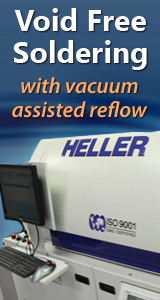I have identified a Board design issue and having trouble convincing others of my findings. I have a BGA (Sn63 balls, +1500 IO, 0.6mm ball, 1mm pitch, with heat spreader plate)that has a high incidence of solder shorting on the corners. The board is designed with 24mil pad, the part has a attachement pad of <21mil (sorry for changing measurement!! it's late) I have always lived by the rule that the board pad size for this type of device (or any BGA) must have a pad no larger than than device attachement pad, otherwise ball collapase can be excessive, and where the excessive ball collapase will lead to 1) a ball standoff that will minimize CTE compliance and/or 2) solder shorts (with corners being most affected). I am getting about a 15% failure due to solder shorts at the corners. All the design rules I know and can find (including IPC) tell me the pad should be <20mil.
I have made the reccomendation that this issue will be eliminated by a reduction in the pad size to <20mil.
Please comment.
Thank you,
reply »
![]() I have identified a Board design issue and having trouble co...
- Sep 07, 2011
by
Woodsmt
I have identified a Board design issue and having trouble co...
- Sep 07, 2011
by
Woodsmt
![]()






